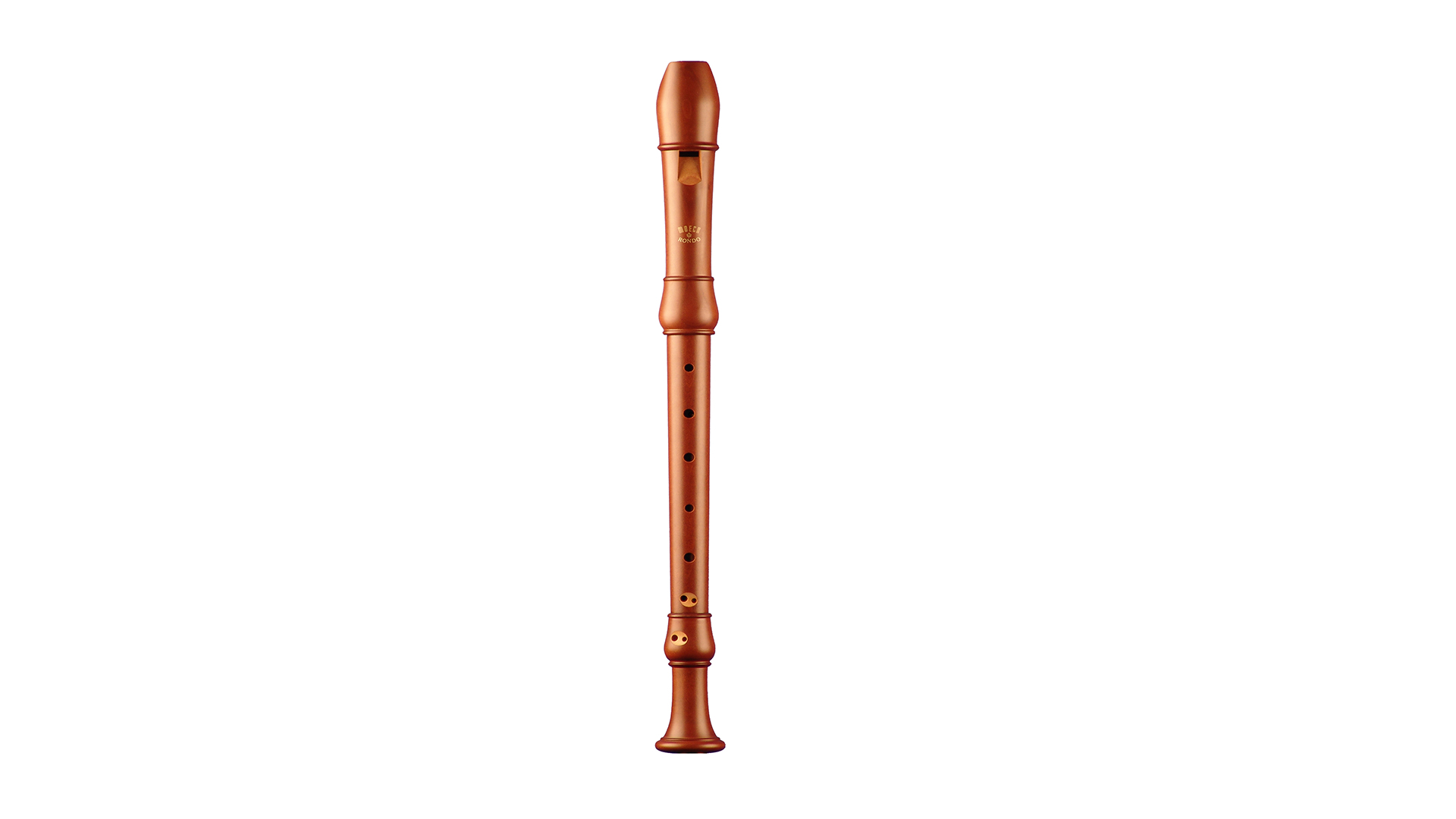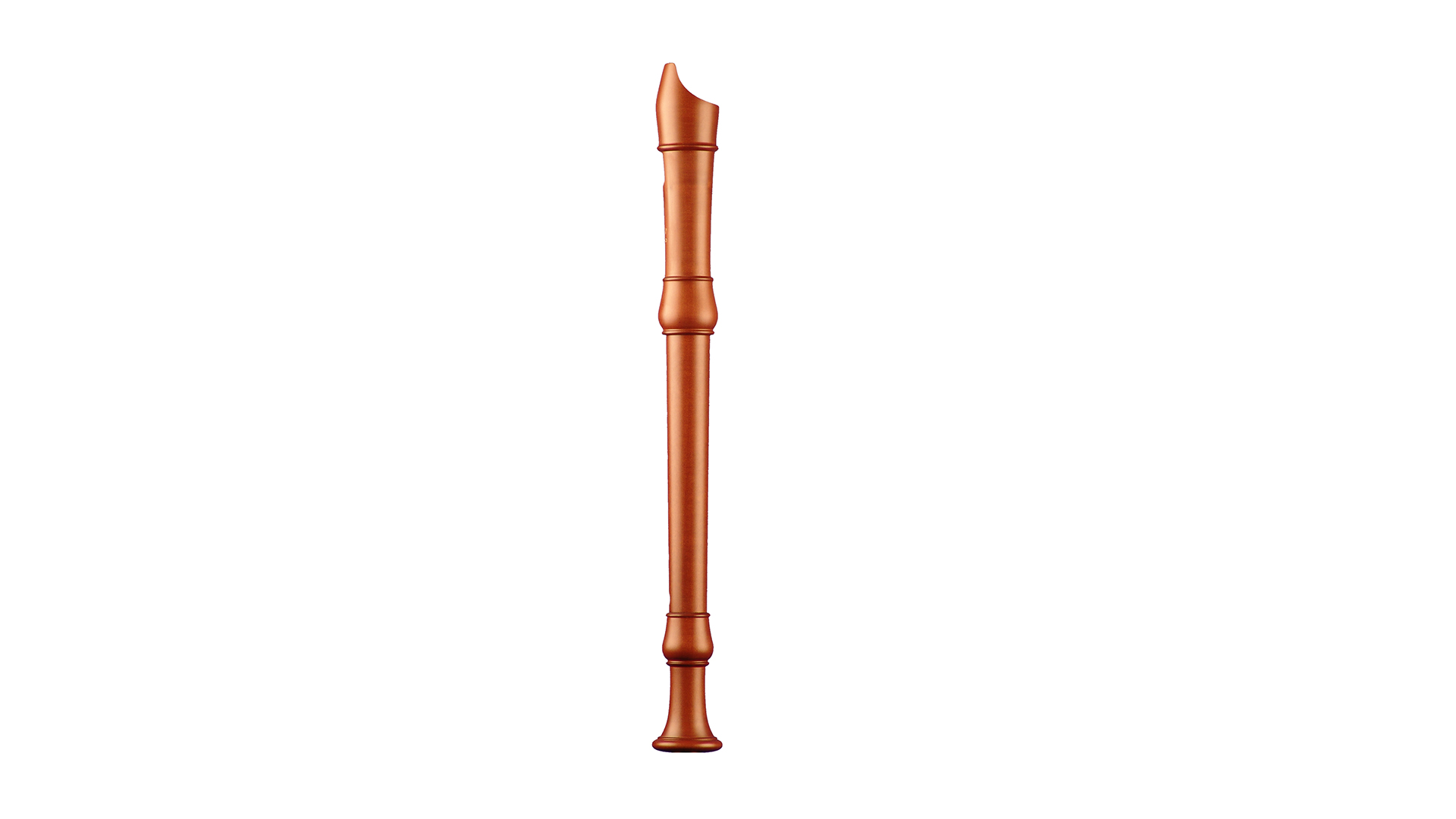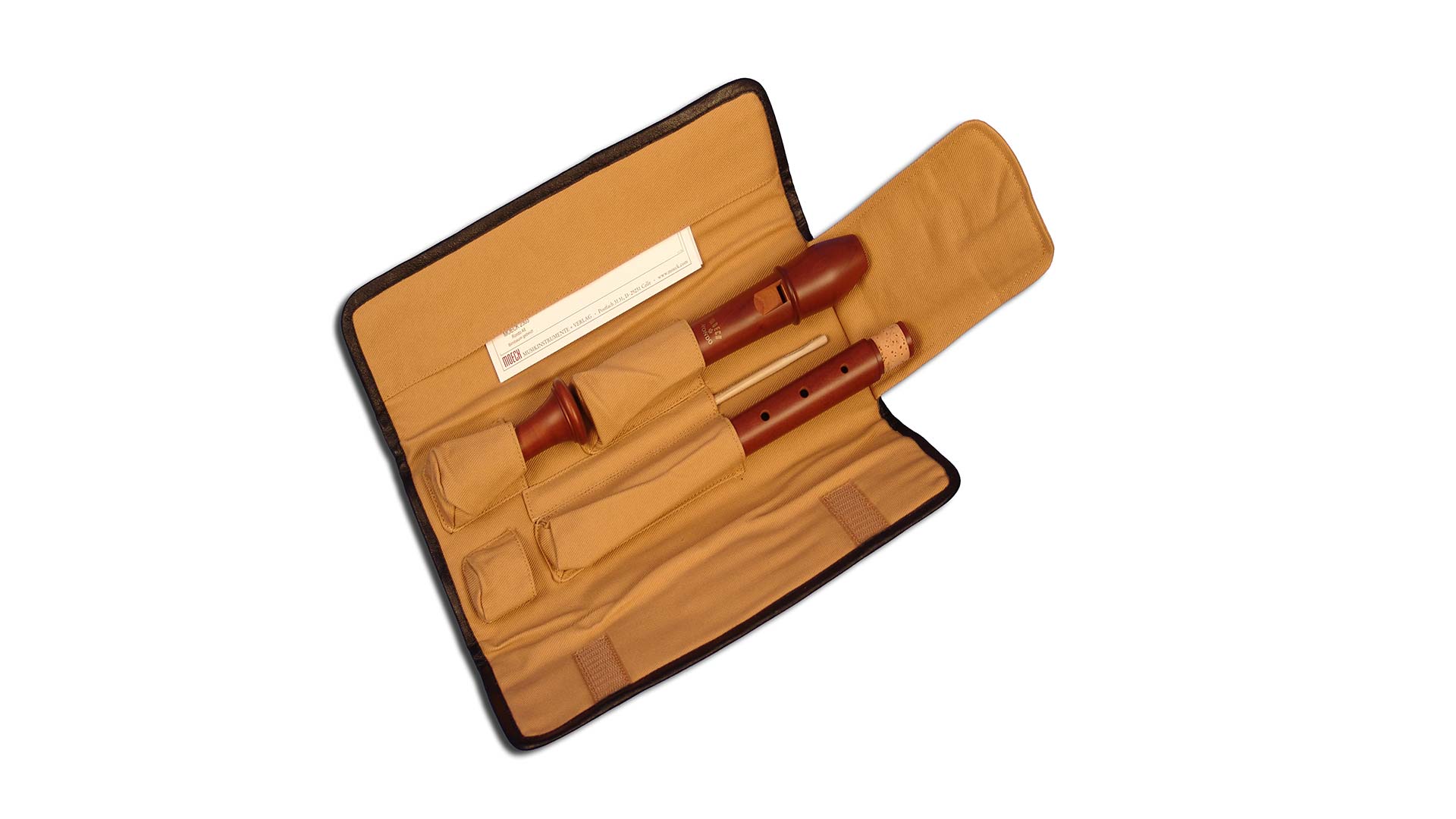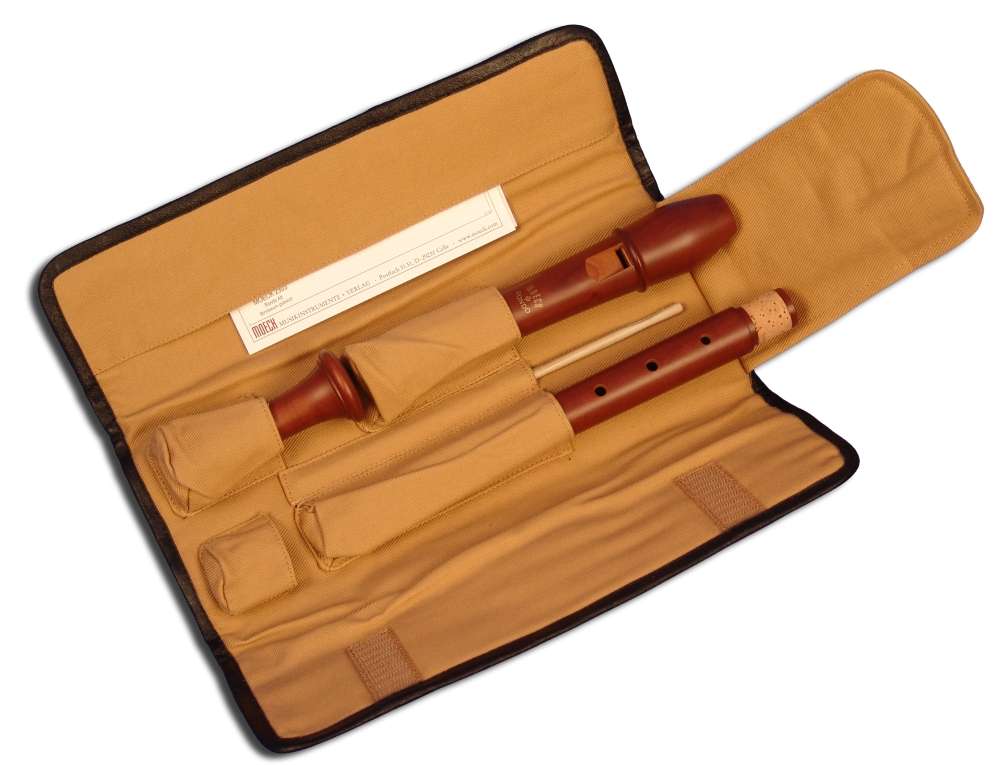Baroque Doublehole, Item: 2303-MOE Stained, 442 Hz
This F-Alto with the article number: 2303-MOE from Moeck is a recorder, the in making music unfailingly will make joy.
This peculiarity is due to the masterful merging of the special design in interplay with the sound of the material Pearwood.
The bore
The course of the inner bore of the instrument is light cylindroconical. This kind of bore course gives the instrument this characteristic tone.In principle, recorders with wider bore sound warmer, fuller, more fundamental and thus more suitable for ensembles than instruments with narrower scale.
For what styles can this instrument be used for?
Pearwood is particularly for instruments used for: focus on choral playing, recorder ensembles and orchestras, other styles are possible.To whom is this recorder addressed?
This means that recorders made of Pearwood are especially for ambitious amateurs and advanced players recommendable. A further rule is that a valuable instrument makes the learning in most cases easier apparently low-cost offer.The windway of a recorder
The windway is the area in the head of the instrument where the breath is formed into a thin sheet of air. This air leaf is the determining element of the sound of the recorder. In interaction with the labium, the air flow is very quickly alternately directed inwards and outwards. This swinging stream stimulates the air in the body of the instrument. This is the origin of the recorder tone. This is the reason why the labium must never be damaged. The same rule applies to the windway. Otherwise suffer the musical expressiveness of the recorder.
The windway of the model 2303-MOE of Moeck has this windway shape: Curved, cylindrical.Conical shaped windways accelerate breathing air more than cylindrical windways.
Never violate windway and labium! Their meaning for the sound is uncommon complex in their geometric shaping. Damages here often lead to a total loss!
Fingerings
The model Moeck 2303-MOE is delivered in the version: Baroque Doublehole .
Construction
The number of parts of an instrument influences in many ways the way with which the recorder in use on the one hand is uncomplicated to handle in terms of easy gripping and on the other hand for the convenient transport.
This is a point that should not be underestimated, especially when transporting larger (and sometimes multiple) instruments.
{Experienced ensemble players can tell you a thing or two about this. Or ask veteran ensemble leaders.
Leaders of large ensembles know how useful good and compact recorder cases are.
Packaging and accessories
The instrument is delivered as standard with: Bag in sturdy cardboard boxThe matching accessories included: Wiper rod, drying cloth, pivot grease, care instructions, fingering chart
Notes before finding another instrument
Get expert advice!The search for your new recorder should never be influenced by "generally accepted" rules.
Get your own realizations after testing a recorder. Don't let "generally valid" rules, such as "the flute xy doesn't work at all in an ensemble/for professionals.
Do not let others stop you from playing a unkown recorder model.
Your musical perception is as unique as you are.
Therefore, only you can decide which instrument will make.
Our recommendation is therefore: Try different materials!
After that you will be delighted and can make a safe decision.
Information about instruments with keys
Not always can the tone holes be placed in the places in the body that are easy to grasp with the fingers. Especially with larger recorders sit for acoustic necessities tone holes adequate to reach. On these instruments, keys are added, which make gripping easier, or possible in the first place.This allows it to be {pleasant|light|ergonomic|conspicuous|above average| good grip even by players with smaller hands.
The instrument 2303-MOE has the following flaps:
| Accessories: | Wiper rod, drying cloth, pivot grease, care instructions, fingering chart |
|---|---|
| Bore shape: | light cylindroconical |
| Construction: | 3-part (head, middle, foot) |
| Fingering: | Baroque Doublehole |
| Material: | Pearwood |
| Material: Botanical name: | Pyrus communis |
| Material: Country of origin: | Austria |
| Packing: | Sturdy cotton case |
| Surface treatment: | Stained |
| Target group: | Ambitious amateurs and advanced players |
| Weight with case: | 0.4305 kg |
| Windway: | Curved, cylindrical |
| Size: | F-Alto |
| Tuning pitch: | 442 Hz |
| Group: | Recorder |
| Material structure: | Pearwood: Very load-bearing with a fine-pored structure. |
| Musical use: | focus on choral playing, recorder ensembles and orchestras, other styles are possible |
| Sound characteristics: | Pearwood: Soft, choral sound. Suitable for playing in a group |
Login






